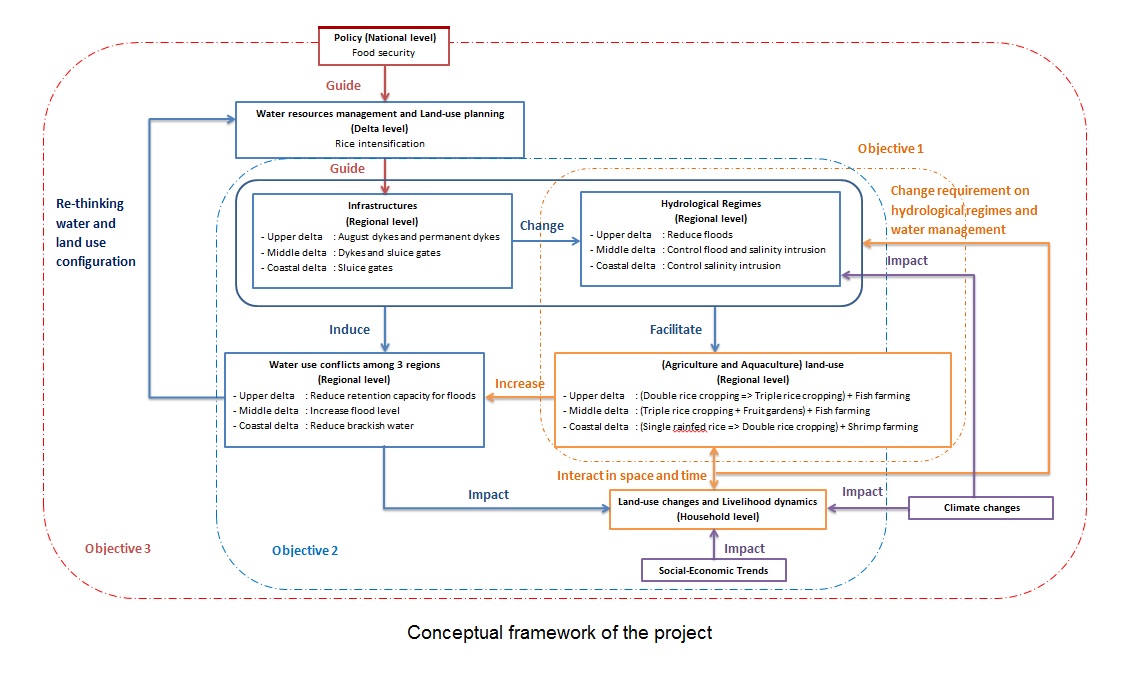
Project
Understanding land and water use change dynamics in the Vietnamese Mekong Delta from a socio-technical perspective
Over the last 30 years, investments in water infrastructures have provided opportunities to enlarge, intensify, and diversify farming systems in the Vietnamese Mekong Delta (VMD). Changes in farming systems and associated land uses induced changes in the water resources management strategy of the delta. Under pressures of food security, economic development, and climate change, the water resources management is challenged by diverging, and often conflicting, demands by land-use changes in the upper, middle, and coastal parts of the delta.
In order to identify strategic future hydrological regimes for the VMD, this research aims to provide insight into the correlation between land-use dynamics and changes in the hydrological regime in the VMD and into the main land-use drivers. The specific objectives are to:
- Investigate the interplay between land-use dynamics and changes in hydrological regime, taking account of spatial interactions and temporal effects
- Identify the main drivers of land-use changes in two different socio-hydrological setting case studies
- Discuss strategic future hydrological regimes for the delta to anticipate climate change, private land-use choices, and inter-boundary water resources management problems.
To achieve these objectives, we integrate both technical and social approaches. The first objective is systematically investigated using time-series maps, statistical data on land uses, and literature documenting historical events of flooding, and salinity intrusion at the regional level. Then, we develop a multi-scale theoretical framework to identify the main drivers of land-use changes at the farm level, exploring the semi-structured interviews with farmers. The strategic future hydrological regimes for the delta are approached from multi-levels, including policy analysis at the delta level, land-water interactions at the regional level, and livelihood dynamics at the farm level.
